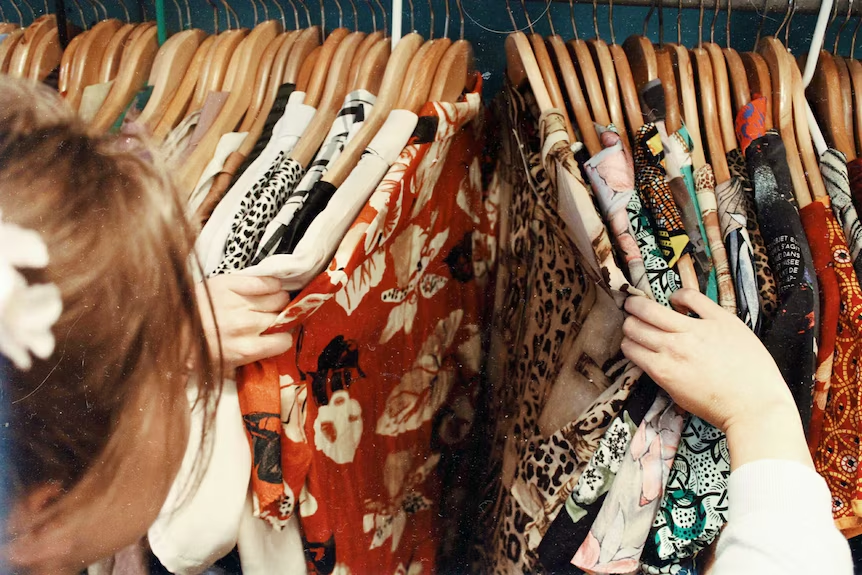I’ll never forget the day I decided to declutter my closet a few years back. There I was, knee-deep in piles of barely worn jeans and trendy tops I’d impulse-bought from fast fashion sites. Feeling guilty about the waste, I packed everything into bags and dropped them off at my local thrift store, patting myself on the back for being eco-friendly. But as I dove deeper into sustainable fashion through books and documentaries, I realized my good intentions weren’t cutting it. Secondhand markets and apps like Depop or ThredUp seem like heroes in the fight against clothing waste, extending the life of garments and keeping them out of landfills. Yet, they barely scratch the surface of a massive problem driven by overproduction and consumerism. In this article, we’ll explore why these options fall short, backed by real data and examples, and look at what might actually make a difference. Think of it as a wake-up call – because if we’re serious about tackling textile trash, we need more than just swapping clothes.
The Massive Scale of Clothing Waste
Clothing waste has ballooned into a global crisis, with billions of garments churned out annually only to end up discarded. Fast fashion giants produce cheap, trendy items that lose appeal quickly, fueling a cycle of buy-and-toss. This isn’t just a closet issue; it’s polluting landfills, waterways, and even the air we breathe.
Key Statistics on Textile Waste in 2025
Recent reports paint a grim picture: the world generates about 92 million tons of textile waste each year, equivalent to a garbage truck dumping clothes every second. In the US alone, that translates to roughly 82 pounds per person annually, with 85% ending up in landfills or incinerators. These numbers highlight how production has doubled since 2000, outpacing any recycling efforts.
The Role of Fast Fashion in Waste Generation
Fast fashion brands like Shein and Zara flood the market with low-quality pieces designed for short lifespans, encouraging constant purchases. This model not only spikes waste but also drains resources – think 700 gallons of water per cotton T-shirt. It’s a system built on disposability, making true sustainability feel like chasing a mirage.
The Appeal of Secondhand Markets and Apps
Secondhand platforms have exploded in popularity, offering a fun way to score deals while feeling green. Apps make it easy to buy or sell pre-loved items from your phone, turning closets into cash. But beneath the hype, these tools mask deeper systemic flaws in our fashion habits.
Popular Secondhand Apps and How They Work
Depop lets users snap photos of their clothes and sell directly to buyers, with a social media vibe that attracts younger crowds. ThredUp sends you a clean-out kit for easy shipping, then lists your items online for a cut of the profits. Poshmark hosts virtual parties for live sales, blending community with commerce.
- Depop: Great for trendy, vintage finds; focuses on user-generated content.
- ThredUp: Ideal for bulk selling; offers consignment for higher-end pieces.
- Poshmark: Strong community features; perfect for accessories and shoes.
Growth of the Secondhand Market
The global secondhand apparel market hit $211 billion in 2023 and is projected to reach $351 billion by 2027. This surge comes from eco-conscious shoppers ditching new buys for used ones. Yet, this growth doesn’t curb the root cause: brands keep pumping out more clothes than ever.
Why Secondhand Isn’t Solving the Waste Problem
At first glance, reselling clothes seems like a win for the planet, but it often just delays the inevitable dump. The volume of discarded textiles overwhelms these markets, leading to more waste abroad. It’s like bailing water from a sinking ship without fixing the leak.
Overwhelmed by Sheer Volume
With 100 billion new garments produced yearly, secondhand outlets can’t keep up – only 10-20% of donations are resalable in stores. The rest gets baled and shipped, often ending up burned or dumped in places like Ghana’s streets. This creates pollution hotspots far from our view.
Low Resale and Recycling Rates
Charity shops sort through donations, but much is too worn or unstylish to sell, heading to recyclers who downcycle it into rags or insulation. Less than 1% of textiles get recycled into new fibers, leaving mountains of waste. It’s a band-aid on a gushing wound.
Global Dumping and Environmental Harm
Unsold secondhand clothes flood developing countries, undercutting local textile industries and causing overflow in markets. In Kenya, piles of imports rot in landfills, releasing microplastics and toxins. What starts as “donation” often becomes someone else’s trash problem.
Masking Overconsumption
Apps encourage more buying under the guise of sustainability – cheap prices lead to hauls of used items we don’t need. This doesn’t reduce demand for new production; it just shifts the guilt. Fast fashion still thrives, churning out trends that quickly become “secondhand.”
Hidden Environmental Costs of Secondhand
Beyond waste, secondhand shopping has sneaky impacts like shipping emissions from app-based sales. Non-local transactions rack up carbon footprints, especially for international deals. It’s ironic how “green” choices can still contribute to climate woes.
Transportation and Carbon Emissions
Mailing a preloved dress across states adds CO2 from trucks and planes, sometimes rivaling new item production. Apps like Vinted promote swaps, but distance matters – local thrift stores cut this down. Multiply by millions of users, and it’s no small issue.
Quality Issues with Fast Fashion Resales
Many secondhand items are ex-fast fashion – synthetic fabrics that shed microplastics in every wash. They break down faster, entering waste streams sooner. Buying used Shein might save money, but it perpetuates poor material cycles.
Pros and Cons of Secondhand Apps for Sustainability
Secondhand apps offer real perks but come with drawbacks that limit their impact on waste.
Pros:
- Extend garment life, reducing immediate landfill trips.
- Lower demand for new items, potentially cutting production emissions.
- Affordable access to quality pieces, promoting mindful buying.
- Community building around eco-fashion.
Cons:
- Encourage overbuying due to low prices and trends.
- High rejection rates mean most clothes still get dumped.
- Shipping adds unnecessary carbon; not always local.
- Doesn’t address overproduction by brands.
Alternatives to Relying on Secondhand
True solutions lie in curbing consumption at the source, not just recirculating excess. Focus on quality over quantity, and support systemic changes. It’s about rethinking our wardrobes entirely.
Reduce and Repair Strategies
Buy fewer, better items that last – think timeless wool sweaters over trendy synthetics. Learn basic mending skills to fix tears; apps like YouTube have free tutorials. This cuts waste more effectively than endless reselling.
Better Recycling and Upcycling Options
Look for brands with take-back programs, like Patagonia’s Worn Wear for repairs and recycling. Upcycle old tees into quilts or bags at home. Emerging tech recycles fibers into new yarn, but scale it up.
Where to Get Sustainable Clothing
Shop ethical brands like Everlane or Reformation for transparent, eco-materials. Local makers on Etsy offer custom pieces with low waste. For tools, try sewing kits from Joann Fabrics to DIY your wardrobe.
Best Tools for Wardrobe Management
Apps like Cladwell help track outfits, maximizing what you own. Stylebook organizes closets digitally to avoid duplicates. These promote longevity over constant turnover.
Comparison: Secondhand vs. Other Waste Solutions
| Solution | Pros | Cons | Impact on Waste |
|---|---|---|---|
| Secondhand Markets | Affordable, fun, extends life | Overwhelmed systems, global dumping | Moderate; delays but doesn’t prevent |
| Reduce Consumption | Cuts production demand, saves resources | Requires mindset shift | High; prevents waste at source |
| Textile Recycling | Turns waste into new materials | Low efficiency (1% recycled) | Medium; limited by tech |
| Upcycling/DIY | Creative, zero cost often | Time-intensive | High for individuals; scalable small |
This table shows secondhand lags behind prevention-focused approaches in real impact.
People Also Ask
Here are real questions from Google searches on this topic, with concise answers based on research.
Is second-hand clothing sustainable?
Second-hand can reduce immediate waste by reusing items, but it’s not fully sustainable due to overproduction and low resale rates. It helps, yet doesn’t fix the core issue of too many clothes being made.
Does thrifting really reduce landfill waste?
Thrifting diverts some items from trash, but with 85% of textiles still landfilled, it’s limited. Much donated clothing ends up overseas, causing pollution there instead.
Why isn’t thrift culture fixing fast fashion?
Thrift culture promotes reuse, but fast fashion’s cheap output floods markets, leading to more waste. It shifts problems without slowing production.
What are the disadvantages of second-hand clothes?
Drawbacks include potential hygiene issues, inconsistent quality, and environmental costs from shipping. Plus, it can encourage buying more used items unnecessarily.
FAQ
Why do secondhand markets fail to solve clothing waste?
They can’t handle the 92 million tons of annual textile waste; only a fraction gets resold, with much dumped abroad. Overproduction continues unchecked.
What are better ways to reduce clothing waste?
Focus on buying less, choosing durable items, and repairing what you have. Support policies for producer responsibility, like those in the EU.
Are there apps that help with sustainable fashion beyond secondhand?
Yes, try Good On You for brand ratings or Noissue for eco-packaging if selling. They guide ethical choices without resale focus.
How does clothing waste affect the environment?
It clogs landfills, releases methane, and pollutes water with dyes and microplastics. Globally, it’s 10% of carbon emissions – worse than flights and shipping combined.
Where can I learn more about textile recycling?
Check sites like the Ellen MacArthur Foundation for circular economy tips, or local programs via Earth911’s recycler locator.
In wrapping up, my own thrift journey taught me that while scoring a vintage jacket feels great, it’s no match for the clothing waste avalanche. We need brands to slow down, governments to regulate, and all of us to buy smarter. Next time you’re tempted by an app deal, ask: do I need this? Small shifts add up. For more on sustainable swaps, see our guide on eco-friendly fabrics. External resources like The Conversation’s article on secondhand limits offer deeper dives.









Leave a Reply